It’s been just under two years since I reviewed the WF-1000XM3, and in that time, Sony’s earbuds never stopped being the reference point for high-end earbuds. Seriously, I reviewed a new pair like a month ago and still made the customary reference.
That’s a rarity in these days of the yearly upgrade cycle. And that goes double for the wireless earbud space. It already felt crowded when Sony entered it in earnest in mid-2019, and things have only gotten worse on that front. But the M3s were a breath of fresh air. With so many companies competing for the middle and low end of the spectrum, Sony dropped something truly premium.
Six months before the AirPods Pro arrived, the M3 hit the market with excellent sound and noise canceling. The latter has, of course, become standardized across the category, but when Sony brought it, it was nearly unheard of. In spite of the headphones’ warm reception, however, the company’s waited two years to deliver a proper follow-up. Understandable, I suppose. Improving on very good is difficult.
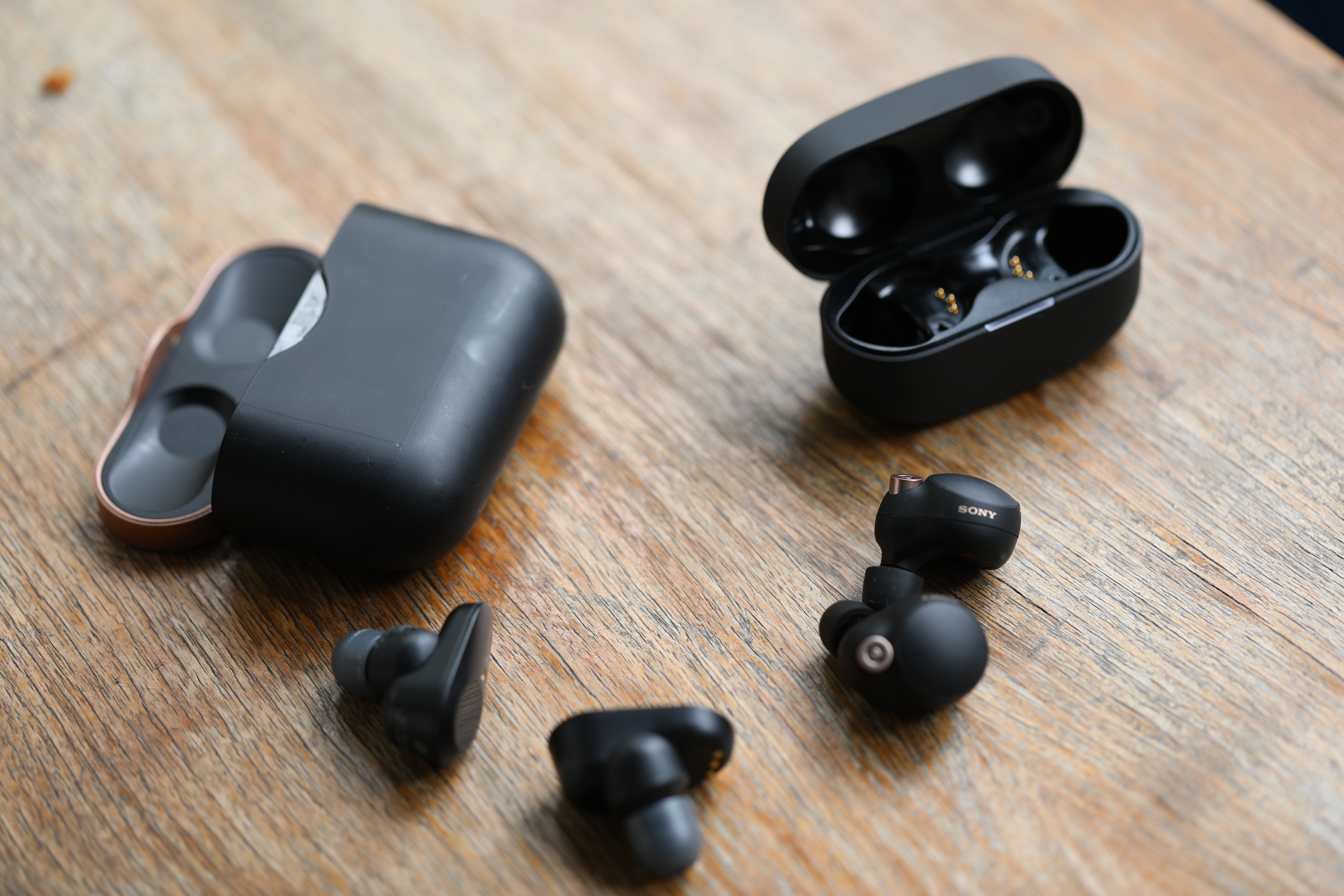
Image Credits: Brian Heater
I’m happy to report that the WF-1000XM4 is worth the wait. Sony’s great at high-end headphones, and these are no exception. The new buds represent an improvement over their predecessors in a number of ways. Unfortunately, they’re priced to match. If you thought the M3’s were steep at $230, I’ve got some bad news for you, friend. The new ones run an additional $50.
The upshot is that new headphones means a price drop on the older units. A quick search shows them for around $178 from a number of places, putting them more in line with standard earbud pricing. At $30 more than the AirPods Pro, Sony’s really leaning into the premium end of the spectrum. If anyone has the resources and scale to keeping pricing down, it’s Sony.
Are the WF-1000XM4s worth the price? It’s a fairly subjective question, of course. What I can definitely say is that they’re among the best-sounding pairs of earbuds you can buy. I’m still not convinced that anyone can truly duplicate the over-ear headphone experience in a pair of buds — the form factor is just too limited for now. But there are definitely advantages to going with buds — namely portability and on these unspeakably hot summer days, a chance to let your ears breathe.
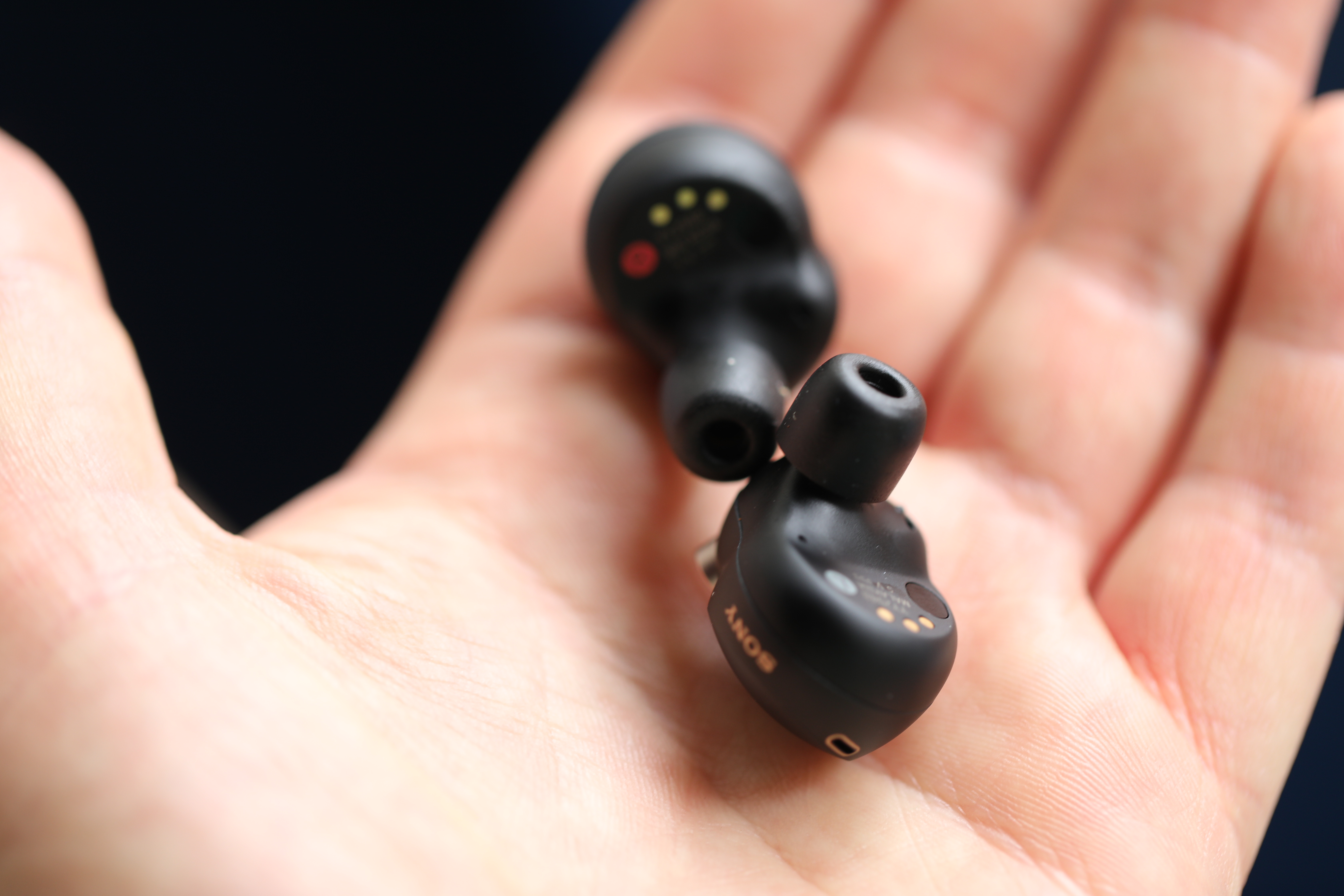
Image Credits: Brian Heater
Buds are, of course, better suited to fitness, as well. Though if you’re specifically looking for a pair to work out in, these probably shouldn’t be your first choice. I mean, they’re IPX4 water resistant, which is plenty good for sweat, but these are more of a long plane ride or sitting at your desk and really enjoying the hell out of a jazz record kind of earbuds.
In part, because they’re big. Granted, they’re a fair bit smaller than their predecessors, and moving from a paddle design to placing the components above the ear canal is a net benefit, but they’re still a bit too large for a long run. And while this is one of those things that vary dramatically from person to person, I found that the buds tended to cause ear pain after wearing them for extended stretches. I found the pressure relieved a bit when I swapped the medium foam tips for a small (I’m a medium in virtually all variety of earbud tips), though the small were much worse at forming a seal in my ears — a necessity to really take advantage of the active noise canceling. And even still, the eventual dull pain was not non-existent.
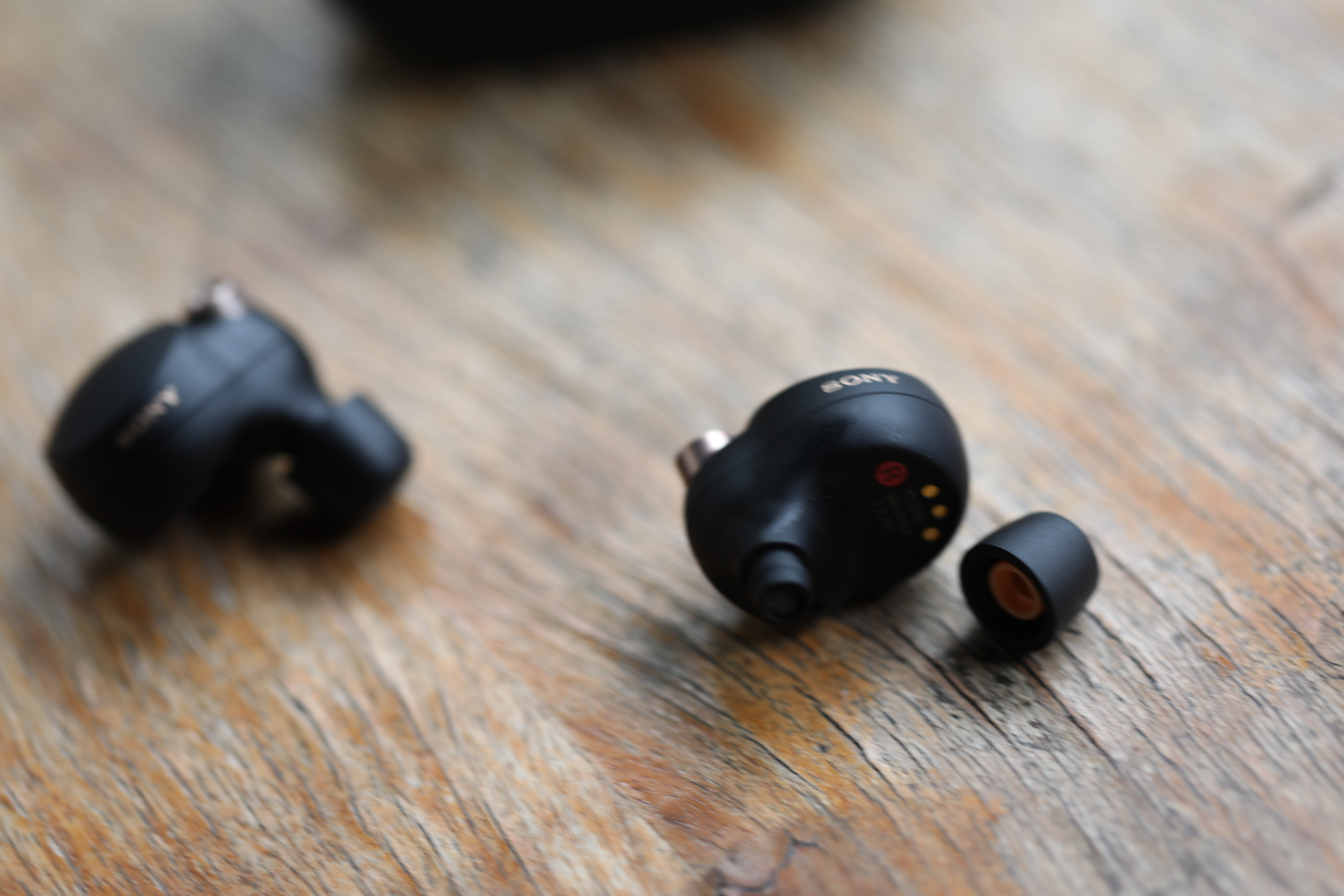
Image Credits: Brian Heater
It is also worth noting that I’ve had less than spectacular experiences with foam tips. They tend to be more prone to wear and tear than silicone and have a habit of getting a bit gnarly in the earwax department (look, this job isn’t always pretty). Though I understand why high-end manufacturers go this route, from a comfort perspective.
Also, hey, kudos to Sony for going with sustainable paper packaging. It’s not much to look at, but how often do you really look at the package your electronics came in? Anything that’s even slightly better for the planet is a net positive in my book. And besides, the charging case looks great.
It’s significantly smaller than the W3’s. These are a helluva lot more pocketable. It’s an understated matte black, albeit with a pretty loud white Sony logo on top. The magnets are strong and the buds snap into the case with authority — they’ll also attach to each other. A thin LED strip directly below the lid glows green or red, depending on charge. The case is wide enough to sit upright, so the USB-C port is located around the back — or you can charge it up wirelessly with a Qi pad.
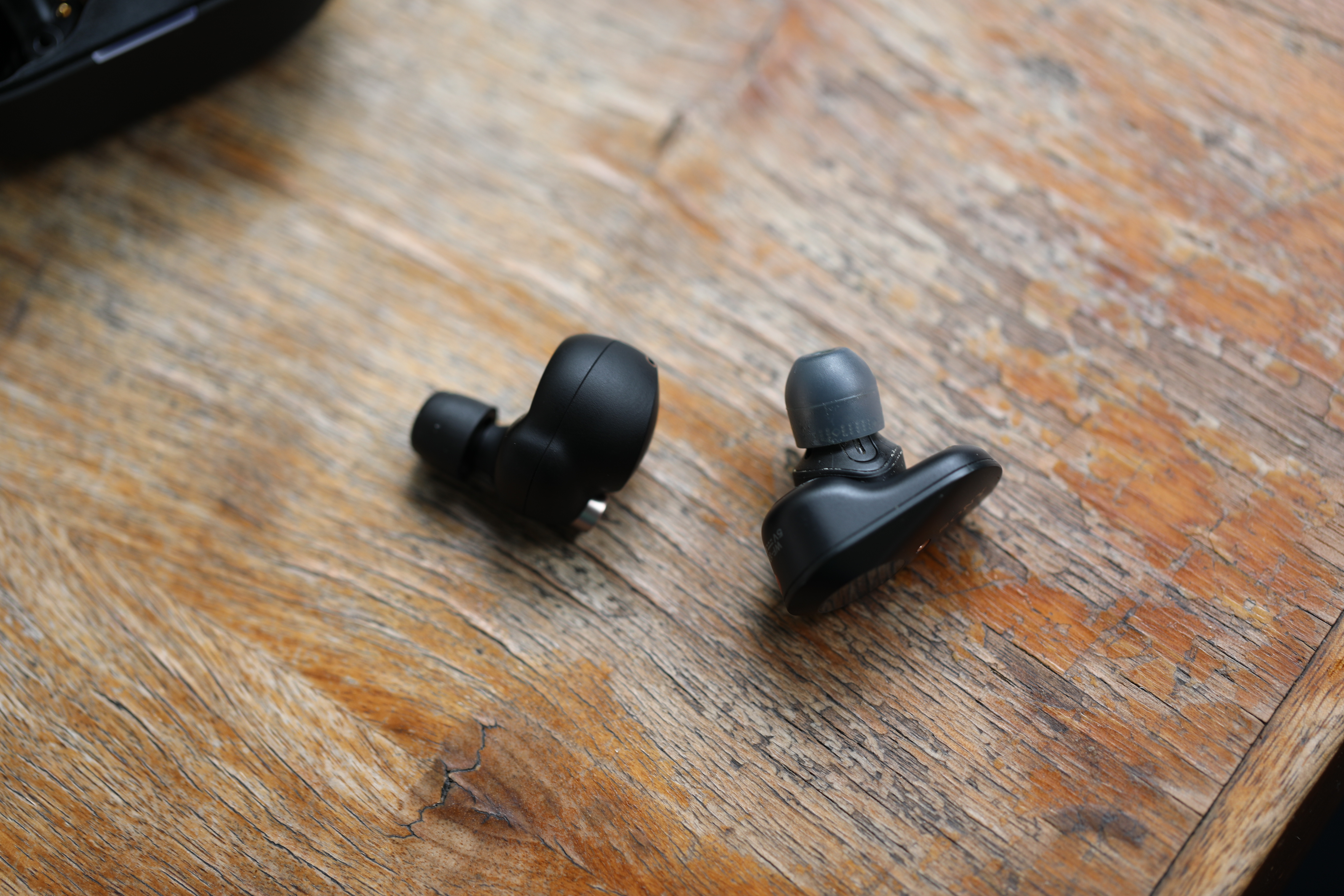
Image Credits: Brian Heater
Interestingly, the stated charging time is the same as the M3s, though the numbers have been shifted around. With the originals, you got six hours on the buds and another 18 from the case. Here it’s eight hours on the buds and 16 on the case. So, a full day, either way, but I certainly prefer the two added hours on the actual earbuds.
The buds themselves are a bit flashier than the case. The design features two intersecting circles, the upper most of which is designed to lie flush with the ear. The outside is accented with a metal microphone, with a second, flush microphone up top.
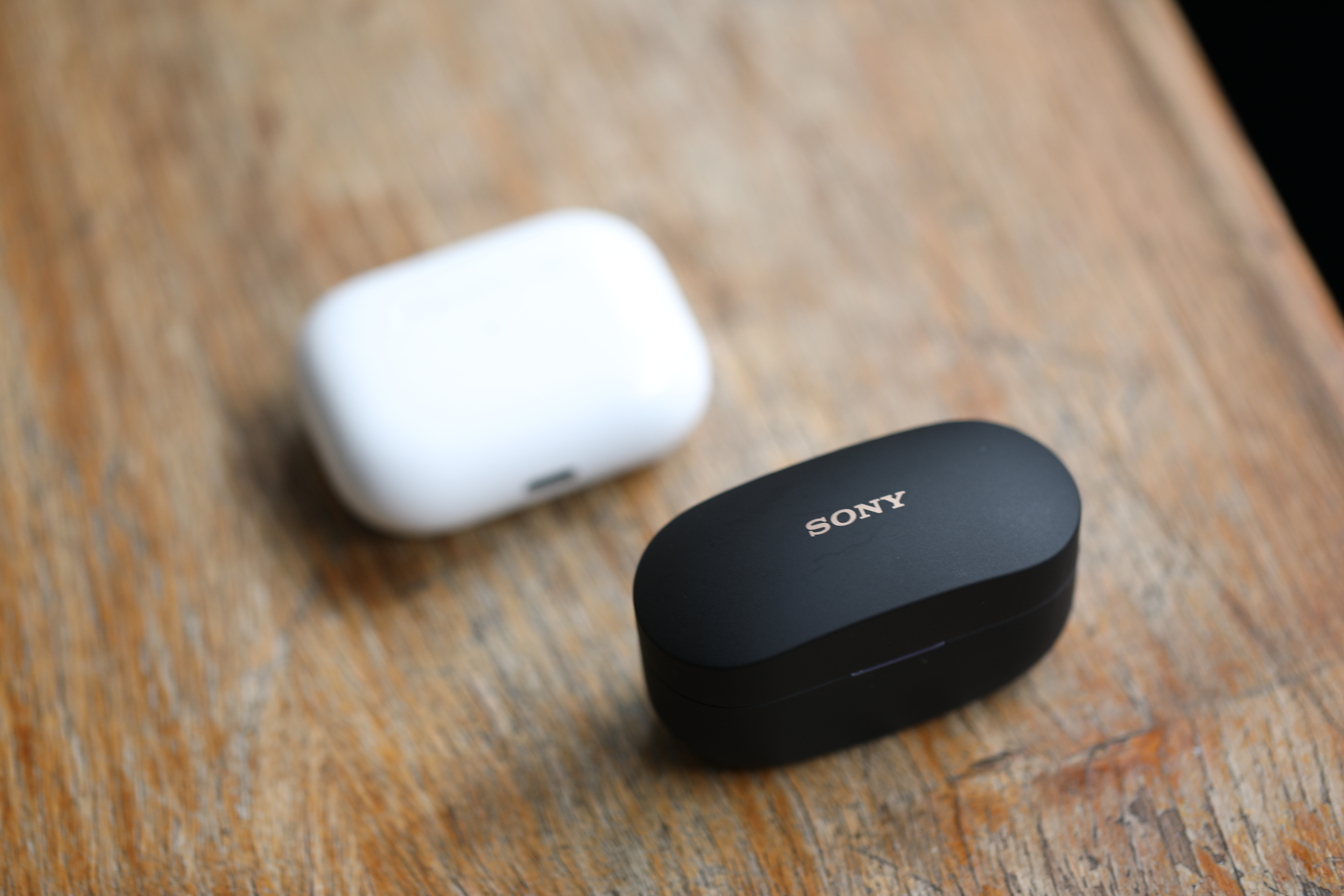
Image Credits: Brian Heater
The sound of the buds is really excellent. It’s got the kind of instrument separation that opens up new details on familiar songs you missed with inferior buds. The default balance is terrific, as well. Sony doesn’t lean to heavily into the bass because it doesn’t have to. The headphones sound terrific across a wide range of music varieties, as well as podcasts.
The noise-canceling is, once again, industry leading. A simple tap on the left earbud cycles between ANC and ambient noise, and the difference is like night and day. I was really impressed by the sounds it was capable of blocking, including my extremely loud vegetable juicer. I was also impressed by the buds’ Bluetooth range.
With earbuds, it’s true that you often get what you pay for. That’s certainly the case here. Sony’s once again managed to set the bar for high-end buds with the WF-1000XM4.
source https://techcrunch.com/2021/06/11/sony-sets-a-new-standard-with-the-wf-1000xm4-earbuds/


No comments:
Post a Comment